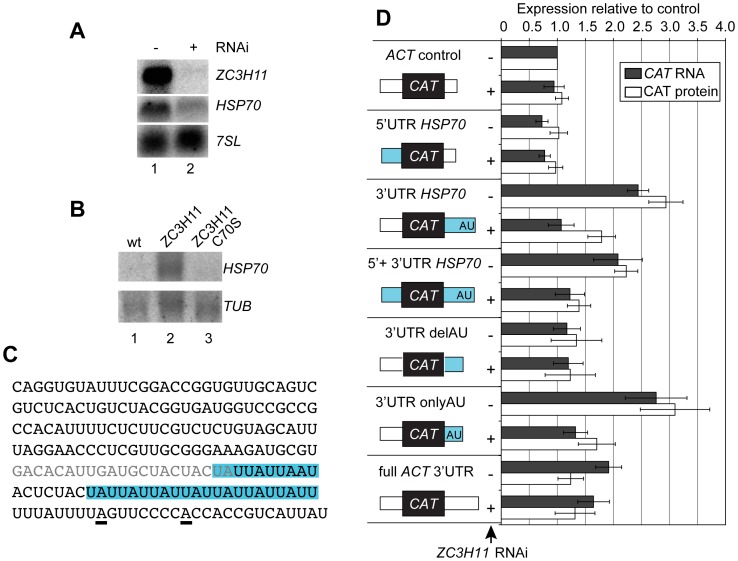Figure 4. ZC3H11 depletion decreases the HSP70 mRNA level and this effect requires the AU-rich sequence in the 3′-UTR.
A. Effect of ZC3H11 depletion on HSP70 mRNA levels in bloodstream forms. HSP70 and ZC3H11 RNA were detected by Northern blotting after one day of RNAi induction, with the 7SL RNA as loading control. B. HSP70 RNA co-precipitates with myc-tagged ZC3H11. Extracts from trypanosomes expressing no myc-tagged protein (wt), ZC3H11-myc, or ZC3H11-myc with the first cysteine of the zinc finger mutated to serine (C70S), were immunoprecipitated with anti-myc antibody. RNA was purified from the precipitates and analysed by Northern blotting. The blot was probed for HSP70, then reprobed to detect tubulin RNA in order to assess non-specific binding. C. Sequence of the HSP70 3′-UTR amplified from the genome. The underlined A's are alternative polyadenylation sites [22]. The blue shadowed regions are the AUU repeats. The grey type indicates the primer used to amplify the 5′ and 3′ regions of the 3′-UTR; this sequence is present in both constructs. D. The AUU repeat region is necessary and sufficient for the response to ZC3H11. Stable transgenic bloodstream-form trypanosome cell lines with inducible ZC3H11 RNAi and constitutively expressed CAT reporter constructs that integrated into the tubulin locus (pol II transcription) were generated. In the controls, the CAT ORF is flanked by a EP 5′-UTR and either a truncated actin (ACT) 3′-UTR or the full-length ACT 3′-UTR (at the bottom). The other constructs have full length or truncated HSP70 UTRs (blue) as indicated. Relative CAT expression levels, with or without RNAi induction (1 day), were determined by Northern blot and CAT activity, and expressed as arithmetic mean ± standard deviation of at least 3 measurements.

